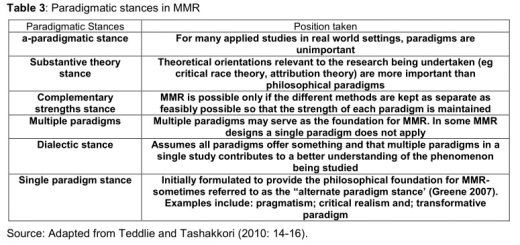PRESENT PARTICIPLE – PAST PARTICIPLE – GERUND by Ignatius Septo Pramesworo
PRESENT PARTICIPLE – PAST PARTICIPLE – GERUND by Ignatius Septo Pramesworo
The Participle
http://www.chompchomp.com/terms/participle.htm
Recognize a participle when you see one.
Participles come in two varieties: past and present. They are two of the five forms or principal parts that every verb has. Look at the charts below.
Regular Verbs:
Verb Simple Present Simple Past Past Participle Present Participle Infinitive
giggle giggle(s) giggled giggled giggling to giggle
help help(s) helped helped helping to help
jump jump(s) jumped jumped jumping to jump
Irregular Verbs:
Verb Simple Present Simple Past Past Participle Present Participle Infinitive
bring bring(s) brought brought bringing to bring
ring ring(s) rang rung ringing to ring
sing sing(s) sang sung singing to sing
swim swim(s) swam swum swimming to swim
Notice that each present participle ends in ing. This is the case 100 percent of the time.
On the other hand, you can see that past participles do not have a consistent ending. The past participles of all regular verbs end in ed; the past participles of irregular verbs, however, vary considerably. If you look at bring and sing, for example, you’ll see that their past participles—brought and sung—do not follow the same pattern even though both verbs have ing as the last three letters.
Consult a dictionary whenever you are unsure of a verb’s past participle form.
Know the functions of participles.
Participles have three functions in sentences. They can be components of multipart verbs, or they can function as adjectives or nouns.
Participles in Multipart Verbs
A verb can have as many as four parts. When you form multipart verbs, you use a combination of auxiliary verbs and participles. Look at the examples below:
Our pet alligator ate Mrs. Olsen’s poodle.
Ate = simple past tense [no participle].
With a broom, Mrs. Olsen was beating our alligator over the head in an attempt to retrieve her poodle.
Was = auxiliary verb; beating = present participle.
Our pet alligator has been stalking neighborhood pets because my brother Billy forgets to feed the poor reptile.
Has = auxiliary verb; been = past participle; stalking = present participle.
Our pet alligator should have been eating Gator Chow, crunchy nuggets that Billy leaves for him in a bowl.
Should, have = auxiliary verbs; been = past participle; eating = present participle.
Participles as Adjectives
Past and present participles often function as adjectives that describe nouns. Here are some examples:
The crying baby drew a long breath and sucked in a spider crouching in the corner of the crib.
Which baby? The crying baby. Which spider? The one that was crouching in the corner.
The mangled pair of sunglasses, bruised face, broken arm, and bleeding knees meant Genette had taken another spill on her mountain bike.
Which pair of sunglasses? The mangled pair. Which face? The bruised one. Which arm? The broken one. Which knees? The bleeding ones.
Participles as Nouns
Present participles can function as nouns—the subjects, direct objects, indirect objects, objects of prepositions, and subject complements in sentences. Whenever a present participle functions as a noun, you call it a gerund.
Take a look at these examples:
Sneezing exhausts Steve, who requires eight tissues and twenty-seven Gesundheits before he is done.
Sneezing = the subject of the verb exhausts.
Valerie hates cooking because scraping burnt gook out of pans always undermines her enjoyment of the food.
Cooking = the direct object of the verb hates.
We gave bungee jumping a chance.
Bungee jumping = indirect object of the verb gave.
Joelle bit her tongue instead of criticizing her prom date’s powder blue tuxedo.
Criticizing = object of the preposition instead of.
Omar’s least favorite sport is water-skiing because a bad spill once caused him to lose his swim trunks.
Water-skiing = the subject complement of the verb is.
What Are Participles?
http://www.grammar-monster.com/glossary/participles.htm
A participle is a word formed from a verb which can be used as an adjective.
The two types of participles are the present participle (ending ing) and the past participle (usually ending -ed, -d, -t, -en, or -n).
Here are some participles being used as adjectives:
The Verb The Past Participle The Present Participle
To rise the risen sun the rising sun
To boil the boiled water the boiling water
To break the broken news the breaking news
To cook the cooked ham the cooking ham
Participle Phrases
It is really common to see participles in participle phrases. A participle phrase also acts like an adjective. In the examples below, the participle phrases are shaded and the participles are in bold:
• The man carrying the bricks is my father.
(The participle phrase carrying the bricks describes the the man.)
• She showed us a plate of scones crammed with cream.
(The participle phrase crammed with cream describes the scones.)
• Whistling the same tune as always, Ted touched the front of his cap with his forefinger as she dismounted.
(The participle phrase Whistling the same tune as always describes Ted.)
• Stunned by the blow, Mike quickly gathered his senses and searched frantically for the pepper spray.
(The participle phrase Stunned by the blow describes Mike.)
Read more about participle phrases.
Present Participles
Present participles end in -ing. Examples:
• boiling water
• caring nature
• deserving recipient
Some more examples of present participles (shaded):
• A laughing man is stronger than a suffering man. (Gustave Flaubert, 1821-1880)
• If you pick up a starving dog and make him prosperous, he will not bite you. This is the principal difference between a dog and a man. (Mark Twain, 1835-1910)
• The only thing that comes to a sleeping man is dreams. (Tupac Shakur)
Present participles are not just used as adjectives. They are also used to form verb tenses. Here are the verb tenses (present participles shaded):
The 4 Past Tenses
Example
simple past tense
I went
past progressive tense
I was going
past perfect tense
I had gone
past perfect progressive tense
I had been going
The 4 Present Tenses
Example
simple present tense
I go
present progressive tense
I am going
present perfect tense
I have gone
present perfect progressive tense
I have been going
The 4 Future Tenses
Example
simple future tense
I will go
future progressive tense
I will be going
future perfect tense
I will have gone
future perfect progressive tense
I will have been going
Read more about present participles.
Past Participles
Past participles have various endings, usually -ed, -d, -t, -en, or -n. Examples:
• broken window
• painted frame
• destroyed bridge
Some more examples of past participles (shaded):
• A swollen eye is God’s way of telling you to improve your interpersonal skills.
• Do not waste time staring at a closed door.
• I like children…if they’re properly cooked. (W.C. Fields)
(Remember, an adjective can also appear after the noun it is modifying. See predicate adjectives.)
Past participles are also used to form verb tenses. Look at these verb tenses (past participles shaded):
The 4 Past Tenses
Example
simple past tense
I went
past progressive tense
I was going
past perfect tense
I had gone
past perfect progressive tense
I had been going
The 4 Present Tenses
Example
simple present tense
I go
present progressive tense
I am going
present perfect tense
I have gone
present perfect progressive tense
I have been going
The 4 Future Tenses
Example
simple future tense
I will go
future progressive tense
I will be going
future perfect tense
I will have gone
future perfect progressive tense
I will have been going
Read more about past participles.
Perfect Participles
Perfect participles are formed like this:
“Having” + [past participle]
Examples:
• Having taken
• Having eaten
• Having played
Some more examples of present participles (shaded):
• Having heard the news, he quickly sold his brother’s record collection.
• Having been promised a steak dinner, she looked less than impressed with her Happy Meal.
Gerund
http://www.ef.com/english-resources/english-grammar/gerund/
The gerund looks exactly the same as a present participle, but it is useful to understand the difference between the two. The gerund always has the same function as a noun (although it looks like a verb). Some uses of the gerund are covered on this page. A separate page deals with verbs that are followed by the gerund.
The gerund as the subject of the sentence
Examples
• Eating people is wrong.
• Hunting tigers is dangerous.
• Flying makes me nervous.
• Brushing your teeth is important.
• Smoking causes lung cancer.
The gerund as the complement of the verb ‘to be’
Examples
• One of his duties is attending meetings.
• The hardest thing about learning English is understanding the gerund.
• One of life’s pleasures is having breakfast in bed.
The gerund after prepositions
The gerund must be used when a verb comes after a preposition. This is also true of certain expressions ending in a preposition, for example the expressions in spite of & there’s no point in.
Examples
• Can you sneeze without opening your mouth?
• She is good at painting.
• She avoided him by walking on the opposite side of the road.
• We arrived in Madrid after driving all night.
• My father decided against postponing his trip to Hungary.
• There’s no point in waiting.
• In spite of missing the train, we arrived on time.
The gerund after phrasal verbs
Phrasal verbs are composed of a verb + preposition or adverb.
Examples
• When will you give up smoking?
• She always puts off going to the dentist.
• He kept on asking for money.
• Jim ended up buying a new TV after his old one broke.
There are some phrasal verbs that include the word “to” as a preposition for example to look forward to, to take to, to be accustomed to, to get around to, & to be used to. It is important to recognise that the word “to” is a preposition in these cases because it must be followed by a gerund. It is not part of the infinitive form of the verb. You can check whether “to” is a preposition or part of the infinitive. If you can put the pronoun “it” after the word “to” and form a meaningful sentence, then the word “to” is a preposition and must be followed by a gerund.
Examples
• I look forward to hearing from you soon.
• I look forward to it.
• I am used to waiting for buses.
• I am used to it.
• She didn’t really take to studying English.
• She didn’t really take to it.
• When will you get around to mowing the grass?
• When will you get around to it?
The gerund in compound nouns
In compound nouns using the gerund, it is clear that the meaning is that of a noun, not of a continuous verb. For example, with the word “swimming pool” it is a pool for swimming in, it is not a pool that is swimming.
Examples
• I am giving Sally a driving lesson.
• They have a swimming pool in their back yard.
• I bought some new running shoes.
The gerund after some expressions
The gerund is necessary after the expressions can’t help, can’t stand, to be worth, & it’s no use.
Examples
• She couldn’t help falling in love with him.
• I can’t stand being stuck in traffic jams.
• It’s no use trying to escape.
• It might be worth phoning the station to check the time of the train.

